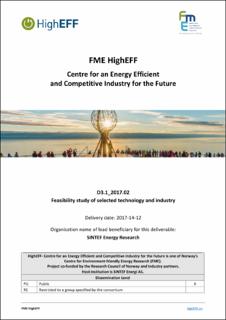| dc.description.abstract | Representative current and near-future aluminium industry heat sources are defined and evaluated for heat-to-power conversion. Indirect organic Rankine cycles, with and without recuperator, are optimized to give maximum power output from a "current" case and a "near-future" case. The analysis demonstrates that performance is strongly dependent on total heat exchanger area, or "system size". For selected values of total area, the maximum annual electric output from the current case is 26 GWh, and the corresponding value for the near-future case is 40 GWh, representing an improvement of 53 %. Energy efficiencies are 11.5 % and 12.8 %, respectively. Theoretical efficiencies (net power to maximum theoretical net power) better illustrate exploited heat source potential, and are 46.8 % and 48.6 %, respectively. Recuperated ORCs improve net power by 4-5 %, but potentially up to 13 %, depending on heat exchanger size. | |
